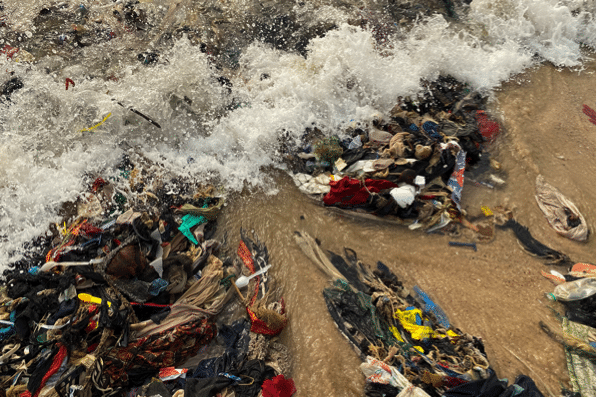Fast fashion is destroying our planet
Fast fashion, the industry that is destroying our planet

The fashion industry is as old as humanity. However, fast fashion as an industry emerged with the great industrialization of the 18th century, a phenomenon that proved to be more of a curse than a blessing for the environment.
Fast fashion arose from the desire of clothing manufacturers to meet the demand for new fashion trends at affordable prices. Rather than the traditional fashion trends of 4 seasons per year, each time is seen as a potential opportunity to create a new fashion style. New clothes arrive in stores every day, which do everything to keep sales at a constant level.
In short, fast fashion consists of fashionable clothing produced in industrial quantities, but with a compromise on quality to keep the price low.
SO WHY TO WORRY?
The fast fashion industry affects both humans and the planet. At first, fast fashion didn't have a negative effect on us, but it gives us this false hope that we have reached a status that allows us to make big purchases like the billboards and magazines encourage us. Unfortunately, this is rather an illusion, because the real joy of buying a product lies in its quality and lifespan.
If the average person ever takes a look at how clothing is produced and the effect of the chemicals used in the process on workers and the environment, the entire planet will protest against fast fashion.
Most fast fashion companies, except those focused on mass customization, are concentrated in different corners of the planet where there are no or few laws that limit and regulate the manufacturing process fashionable clothes.

HOW THE UNIVERSE SUPPORTS FROM FAST FASHION
The fast fashion industry's constant demand for materials puts enormous pressure on the non-renewable materials needed to make these products. It should also be noted that the proper fast fashion waste disposal system is complex and impossible to implement in the regions where these products are manufactured. Here are some ways fast fashion negatively impacts the environment.
Fossil fuels:
In countries like Bangladesh, China and India, there are worrying reports coming out of these nations about how fossil fuels are being released. In China, which concentrates most fast fashion products, coal is essential for fast fashion production centers. Coal releases most of the harmful chemicals that degrade the environment.
Although most fast fashion production centers are attempting to transition to renewable energy, this transition is still in its infancy. Moreover, their energy consumption is enormous now. As such, the mass production of clothing as part of fast fashion is very toxic to the environment.
Water pollution:
The rate of increase in water pollution is skyrocketing, and most of this increase is due to the irresponsible way fast fashion industries dispose of their wastewater. Most textiles used in fast fashion industries are coated in environmentally toxic dyes; These liquid dyes end up in the ocean after joining the fresh water flows which pass near the production centers. Thus, it is not surprising that countries that have a high concentration of fast fashion industries have extremely polluted waters.
Increase in waste:
The high production rate and fashion trends that characterize fast fashion industries result in waste being sent to landfills, as these fashion materials, in the vast majority, are not disposed of properly. Although there is no reliable information on the amount of waste from fast fashion, estimates show that a preponderant amount of materials produced by fast fashion companies are synthetic. The downside is that these materials will sit in landfills or under the sea without decomposing.
For example, more than 70 million barrels of oil were used to produce polyester in 2019, which is an important material for fashion materials. Polyester decomposes after about 200 years.
A RAY OF HOPE IN THE FASHION INDUSTRY
Although these problems are not exclusive to the fashion industry, it is nevertheless interesting to note that the fast fashion sector is the largest producer of pollutants to the environment, after the oil and gas sector.
Some companies are implementing innovations that can ensure better sustainability in the fashion industry.
Fashion industries keen to maintain industry best practices are rare to see compared to fast fashion industries whose focus is centered on mass production for profit maximization. Companies that focus on mass customization generally have good staff, good waste disposal structure and good product quality; you should therefore opt for these when buying your clothes.
The biggest threat to the environment emanating from fashion production centers is the excessive use of chemicals in the production process. Thus, fashion brands and companies that want to show themselves as an example, such as companies focused on mass customization have done so, should use the smallest amount of chemicals possible. You should lean towards brands that focus on mass customization . Always buy your clothes from a brand that cares about humanity and the environment; get rid of the fast fashion labels and embrace the labels that practice today mass customization .
